Texas A&M Celebrates Black History And Achievement
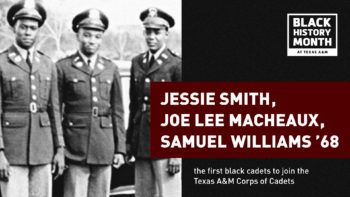
1954-1964: The Road To The Integration Of Texas A&M
The U.S. Supreme Court ruled unanimously in Brown v. Board of Education of Topeka, Kansas that racial segregation in public schools was in violation of the Constitution. That landmark decision in 1954 began the gradual move toward an integrated Texas A&M University. Two years later, the Texas A&M Student Senate passed a resolution in opposition of segregation, but the student body in a campus-wide election voted to continue segregation.
Texas A&M hired World War II hero and former student Gen. Earl Rudder three years later to serve as president. He would later be credited for providing the leadership necessary to lay the groundwork for integration.
The Texas A&M University System Board of Regents decided in 1962 to “admit qualified students regardless of race” to Arlington State College in 1962 to avoid the threat of a lawsuit.
The passage of the Civil Rights Act in 1964 officially ended segregation in southern higher education. Soon after, five freshmen men became the first black students in the Corps of Cadets.
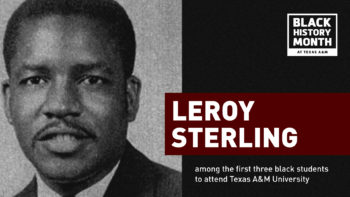
1963: First Black Students Enroll At Texas A&M
By 1963, a year before the Civil Rights Act, three black students quietly enrolled in a summer session as “special students,” becoming the first to attend Texas A&M. Among them was Leroy Sterling, who took classes during two summer session before going on to graduate from Texas Southern University and earn a master’s degree in French and English from the University of Houston.
Sterling, who was from Bryan, served in the Army and enrolled at Texas Southern University prior to taking summer classes at Texas A&M. He first received a rejection letter, but learned a few weeks later that the university would accept him. Sterling taught at Texas Southern University for five years before working for Dow Chemical Company for 17 years. He continued his teaching career at Alabama A&M University.
In 2019, Texas A&M President Michael K. Young awarded Sterling the Pioneer Medal, which honors African Americans admitted to the university between 1963 and 1970.
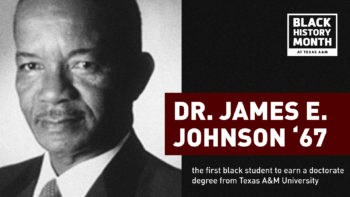
1967: First Black Student Earns A Doctorate From Texas A&M
James E. Johnson, a Rockdale native, was accepted into Prairie View A&M in 1944, where he earned a bachelor’s degree in education. During that time, he was drafted into the Armed Forces and performed police duties in the Army until he was honorably discharged in 1948. He returned to Prairie View after his discharge and finished his bachelor’s degree.
Between teaching vocational agriculture for the Bryan Independent School District, raising a family alongside his wife Katie Francis Johnson and working his farmland, he found time to earn a master’s degree from Prairie View in 1962.
Johnson applied to Texas A&M in College Station multiple times from the 1940s through the 1960s, but was turned away because of segregation. He applied again and was finally admitted at Texas A&M after the school was integrated, and earned his doctorate in education in 1967.
Johnson was also honored with the Pioneer Medal in 2019.
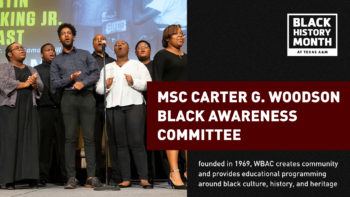
1969: Black Awareness Committee Is Founded To Address Issues Affecting Black Students
Founded in 1969 as an ad-hoc operating committee in the Memorial Student Center, the Black Awareness Committee took on the charge of addressing issues directly affecting black Texas A&M students and providing cultural programming for the entire university. The organization was re-established in 2004 as the Carter G. Woodson Black Awareness committee. Its goal is to educate the campus and surrounding communities, explore opportunities to develop and cultivate informed leaders and enhance the student experience.
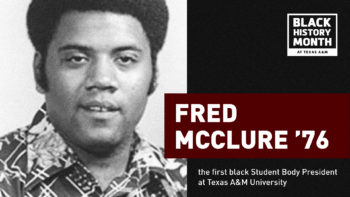
1976: Texas A&M Elects First Black Student Body President
Fred McClure broke new ground for student leaders during Texas A&M’s centennial year when he was elected to serve as student body president for the Student Government Association’s 29th session for 1976-1977, becoming the school’s first black student to hold the position.
After graduating, McClure served as associate deputy U.S. attorney general, special assistant for legislative affairs under President Ronald Reagan and assistant for legislative affairs under President George H.W. Bush. McClure was honored for his achievements as the 115th Texas A&M Distinguished Alumnus in 1991. He was also appointed to the Texas A&M University System Board of Regents in 1995, becoming the second African-American to hold the position.
McClure was named chief executive officer of the George H.W. Bush Presidential Library Foundation in 2012. He now serves as the executive director of leadership initiatives at the Office of the Provost at Texas A&M.
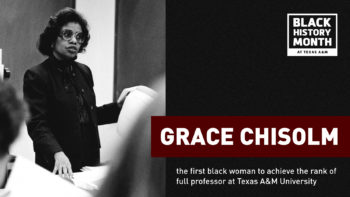
1983: Dr. Grace Butler Chisolm Joins Texas A&M Faculty
Dr. Grace Butler Chisolm came to Texas A&M in 1983 and became the first African-American woman to achieve the rank of full professor. In 1985 she was named special assistant to then-Texas A&M President Frank Vandiver – the first African-American to hold such an influential position in the school’s administration.

1984: ExCEL Begins To Promote Preservation Of Cultural Identities
The I CARE Program began in 1984 with 35 freshmen promoting the preservation of their cultural identities. It was later renamed the Minority Freshmen Orientation, and is now known as Excellence uniting Culture, Education, and Leadership (ExCEL). The student organization helps new Aggies find an academic, social and personal balance at Texas A&M, and assists students interested in engaging with the African American campus community in making a smooth transition during their first year as an Aggie.
Throughout its history, ExCEL has continued to recognize the importance of students’ need to identify with people having similar experiences in being a student at Texas A&M.

1991: Student Body Elects First Black Yell Leader
Ronnie McDonald, who grew up in Bastrop, won a student body election in 1991 to serve as the school’s first black Yell Leader. In 1992, he successfully ran for senior Yell Leader.
After graduation, McDonald became Bastrop County’s first black judge, and in 1998 at age 27, the youngest county judge in Texas history. He served for 14 years. He returned to Texas A&M in 2013 to serve in the role of executive director of community relations and strategic partnerships for Texas A&M AgriLife. He now serves the Texas Rural Leadership Program as its executive director.
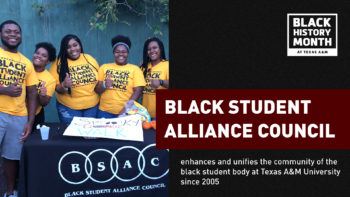
2005: The Black Student Alliance Council Is Formed
The Black Student Alliance Council launched in 2005 as an effort to unite Black Aggies. Student leaders formed the organization to serve as a sounding board to formulate a voice for black students at Texas A&M. The group aims to enhance and unify the black community while making the Texas A&M campus more aware of the accomplishments, achievements and needs of the black student body.
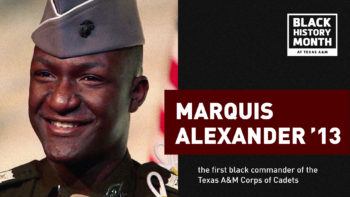
2012: Former Marine Selected As First Black Corps Commander
Former Marine Marquis Alexander was selected commander of the Corps of Cadets almost 50 years after the integration of Texas A&M. He was the first black student to hold the highest cadet position, and the first black sergeant major in the Corps.
In addition, Alexander also became the first veteran leader after having served in the Marine Corps prior to enrolling in Texas A&M.
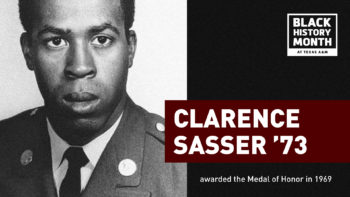
2013: Former Student’s Medal Of Honor Goes On Permanent Display
Medal of Honor recipient and class of 1973 graduate Clarence Sasser returned to his alma mater in 2013 to put his medal on permanent display in the Memorial Student Center’s Medal Hall of Honor. Sasser was the first African-American medal winner to be inducted into the hall and the first who served in the Vietnam War.
Sasser served as a medic in the war. On Jan. 10, 1968, he was helping evacuate soldiers wounded in a helicopter crash in a flooded rice paddy. Under heavy enemy fire, Sasser carried one of the soldiers to cover and helped carry others to safety, despite sustaining wounds in both legs.
During the 2013 ceremony, Sasser thanked the late Gen. Earl Rudder, president of Texas A&M from 1959 to 1970, for offering him a scholarship and giving him the opportunity to attend Texas A&M.
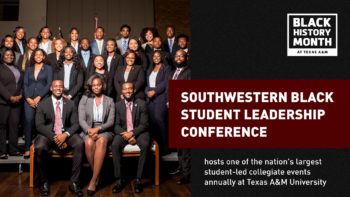
2018: The Southwestern Black Student Leadership Conference Celebrates 30 Years At Texas A&M
Nearly 700 students from across the country convened at Texas A&M for a weekend of fellowship and professional development at what has become one of the largest student-led collegiate events in the United States. The 2018 SBSLC theme of “A Legacy in Living Color” celebrated decades of the vibrancy of the black community at Texas A&M that has spanned three decades.





